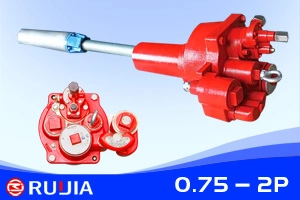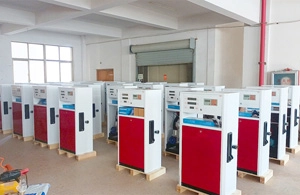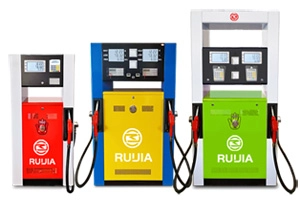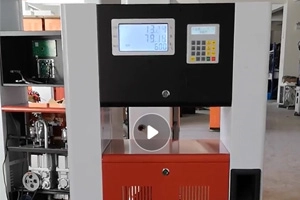- 20+ Years Of History
- 30+ Countries
- 50000 Yearly Production
Explosion Protection Standards for Fuel Dispensers
Explosion Protection Standards for Fuel Dispensers: Key Chinese National Standards (English Overview)
China's fuel dispenser explosion protection standards are primarily defined in the GB/T 22380 series, which aligns with international safety frameworks while incorporating localized requirements. Below is a synthesis of core standards and their English-language requirements:
1. GB/T 22380.1-2017
Title: Explosion Protected Safety Technique of the Petrol Filling Station – Part 1: Explosion Protected Safety Technique Requirements for Fuel Filling Dispenser
Scope:
Applies to fuel dispensers with a flow rate ≤200 L/min used in environments ranging from -20°C to +40°C.
Covers design, installation, and operational safety for outdoor gas stations.
Key Requirements:
Explosion Classification:
Electrical components must meet GB 3836.1-2010 (IEC 60079-0 equivalent) for Zone 1 and Zone 2 environments.
Minimum ignition energy (MIE) compliance for Zone 1: ≤1 mJ.
Material Stability:
Components in contact with fuel must resist corrosion (tested per ISO 9328).
Aluminum alloys require compliance with GB 25286.1-2010 for explosion-proof properties.
Leakage Control:
Hydraulic systems must limit internal leakage to ≤4 L and external leakage to ≤1 L during pressure tests.
Electrical Safety:
Cables must have insulation resistance ≥100 MΩ (per GB/T 3836.15).
Emergency shutdown systems must disconnect power within 0.5 seconds of activation.
2. GB/T 22380.2-2010
Title: Explosion Protected Safety Technique of the Petrol Filling Station – Part 2: Safety Requirements for Construction and Performance of Safe Breaks
Focus:
Safety Break Valves:
Mandatory installation between fuel hoses and nozzles to prevent leaks exceeding 15 mL during rupture.
Materials must withstand fuel immersion (tested per EN 13463-1).
Mechanical Integrity:
Valves must withstand 500 N tensile force without separation.
Reusable valves require full disassembly and reassembly testing.
3. GB 22380.1-2008 (Superseded by 2017 Edition)
Legacy Requirements:
Zone Classification:
Refueling areas designated as Zone 1 (ignition likely) and Zone 2 (ignition unlikely).
Enclosures must have IP54 protection against dust/water .
Vapor Barrier Systems:
Use of non-conductive materials to prevent static buildup (tested per EN 13463-1).
4. International Compliance
ATEX/IECEx:
Chinese standards align with ATEX Directive 2014/34/EU for equipment in explosive atmospheres.
Mandatory CE marking for exports to EU markets.
UL/CSA:
Electrical components must meet UL 1203 (explosion-proof enclosures) for North American markets.
5. Implementation Guidelines
Testing Protocols:
Vibration resistance: 20 g acceleration for 1 hour (per GB/T 2423.10).
Temperature cycling: -40°C to +85°C for 24 hours.
Documentation:
Manufacturers must provide Explosion Protection Certificates (e.g., GB/T 3836.1 compliance statements).
How to Access Full Standards
Official Sources:
Purchase from China Standards Service Centeror SAC/TC 9 (National Technical Committee on Explosion Protection).
Third-Party Translations:
China fuel dispenser (https://www.cnruijia.com),professional fuel dispenser manufacturer.
Key Differences from International Standards
| Aspect | GB/T 22380 | IEC 60079 |
|---|---|---|
| Zone Classification | Simplified Zone 1/2 | Detailed Zone 0/1/2/21/22 |
| Material Testing | Focus on corrosion resistance | Emphasis on electrical safety margins |
| Certification | Mandatory CPA mark | CE/ATEX marks |
For detailed implementation, refer to the full texts of GB/T 22380.1-2017 and GB/T 22380.2-2010.







